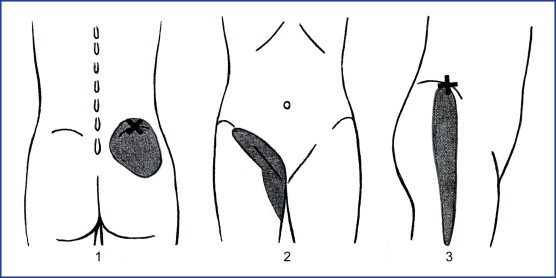Contents
Syndrome de Maigne
Maigne syndrome results in pain in the lower back and pelvis. These are due to irritation of nerves in the dorsolumbar region. Pain management is essentially based on the injection of anti-inflammatory drugs.
What is Maigne syndrome?
Definition of Maigne syndrome
Maigne syndrome is also called dorsolumbar hinge syndrome. It designates a set of pains due to irritation of nerves in the dorso-lumbar area (transition zone between the upper part and the lower part of the back).
Maigne syndrome is more specifically the consequence of irritation of the nerves emerging at the level of the T12 (12th thoracic vertebra) and L1 (1st lumbar vertebra) vertebrae. More rarely, it may be irritation in the nerves emerging from the T11-T12, L1-L2 and T10-T11 vertebrae.
To better understand, it is worth remembering the anatomy of the spine. It is a bone structure made up of a collection of vertebrae and containing the spinal cord, an essential structure of the central nervous system from which many nerves arise. These ensure the transmission of nerve messages in the body.
For example, in the context of Maigne syndrome, the affected nerve branches innervate in particular the lower lumbar region, the upper part of the buttocks, the sacrum, the crease of the groin, the labia majora or scrotum, the trochanteric region (hip ) and the lateral aspect of the thigh. Many pains in the lower back can thus occur.
Causes of Maigne syndrome
Maigne syndrome is the consequence of irritation of the nerves in the dorsolumbar area, that is to say the junction between the dorsal part of the spine and the lumbar part. This area is particularly stressed because the dorsal column is very mobile unlike the lumbar spine which has little rotation.
Irritation of the nerves in the dorso-lumbar area can especially occur in the following cases:
- minor intervertebral disturbance in the posterior part of the joint;
- posterior joint osteoarthritis;
- disc pathology affecting the intervertebral discs.
Diagnosis of Maigne syndrome
The clinical examination makes it possible to identify the type of pain, as well as its location (s). For this, the doctor performs various examinations of touch, palpation and pinch-roll.
Medical imaging tests, such as an X-ray or MRI (magnetic resonance imaging), may be required to confirm or further the diagnosis. These examinations make it possible in particular to note the presence or absence of degenerative lesions. However, these remain rare.
Symptoms of Maigne syndrome
Pain in the lower back
Maigne syndrome is characterized by a set of pains in the lower back. We speak of projected pain because they do not occur at the level of irritation of the nerves but at the level of the regions innervated by these nerves. In the majority of cases, the affected areas are the lower lumbar region, the upper part of the buttocks, the sacrum, the crease of the groin, the labia majora or scrotum, the trochanteric region (hip) and the lateral aspect of the breast. thigh.
What to do during Maigne syndrome?
Pain management is essentially based on injections of anti-inflammatory drugs into the joints of the spine in the dorso-lumbar hinge region. Physiotherapy sessions can also be offered.
Prevent Maigne syndrome
As with many back pain, prevention of Maigne syndrome is based on:
- maintaining a healthy lifestyle, including good eating habits and regular physical activity;
- maintaining a healthy weight;
- good postures in everyday life, including in professional activities.










